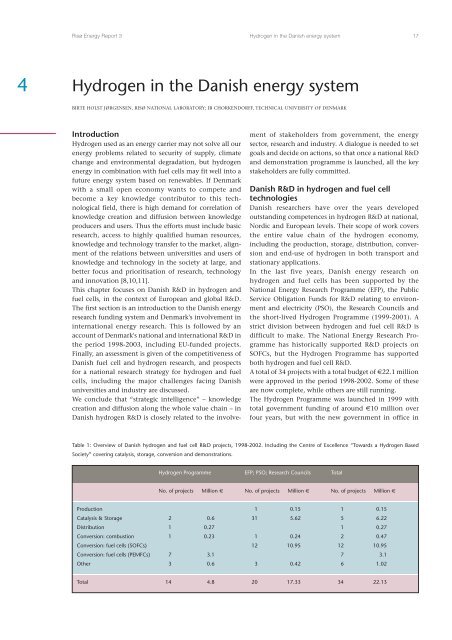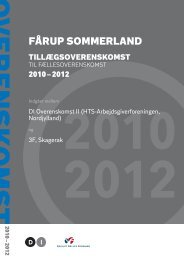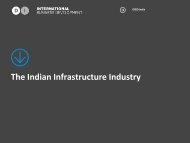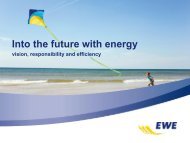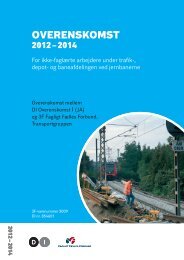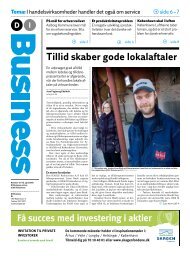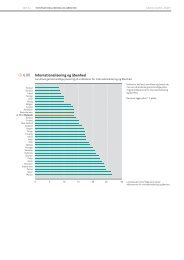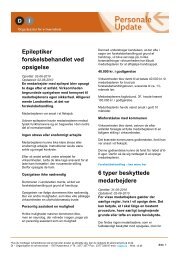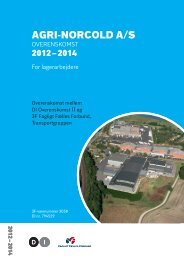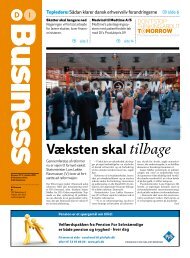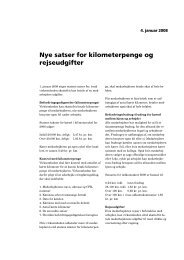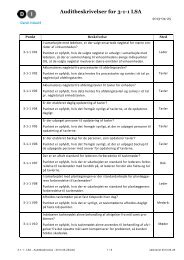Hydrogen and its competitors, 2004
Hydrogen and its competitors, 2004
Hydrogen and its competitors, 2004
You also want an ePaper? Increase the reach of your titles
YUMPU automatically turns print PDFs into web optimized ePapers that Google loves.
Risø Energy Report 3<strong>Hydrogen</strong> in the Danish energy system 174<strong>Hydrogen</strong> in the Danish energy systemBIRTE HOLST JØRGENSEN, RISØ NATIONAL LABORATORY; IB CHORKENDORFF, TECHNICAL UNIVERSITY OF DENMARKIntroduction<strong>Hydrogen</strong> used as an energy carrier may not solve all ourenergy problems related to security of supply, climatechange <strong>and</strong> environmental degradation, but hydrogenenergy in combination with fuel cells may fit well into afuture energy system based on renewables. If Denmarkwith a small open economy wants to compete <strong>and</strong>become a key knowledge contributor to this technologicalfield, there is high dem<strong>and</strong> for correlation ofknowledge creation <strong>and</strong> diffusion between knowledgeproducers <strong>and</strong> users. Thus the efforts must include basicresearch, access to highly qualified human resources,knowledge <strong>and</strong> technology transfer to the market, alignmentof the relations between universities <strong>and</strong> users ofknowledge <strong>and</strong> technology in the society at large, <strong>and</strong>better focus <strong>and</strong> prioritisation of research, technology<strong>and</strong> innovation [8,10,11].This chapter focuses on Danish R&D in hydrogen <strong>and</strong>fuel cells, in the context of European <strong>and</strong> global R&D.The first section is an introduction to the Danish energyresearch funding system <strong>and</strong> Denmark's involvement ininternational energy research. This is followed by anaccount of Denmark's national <strong>and</strong> international R&D inthe period 1998-2003, including EU-funded projects.Finally, an assessment is given of the competitiveness ofDanish fuel cell <strong>and</strong> hydrogen research, <strong>and</strong> prospectsfor a national research strategy for hydrogen <strong>and</strong> fuelcells, including the major challenges facing Danishuniversities <strong>and</strong> industry are discussed.We conclude that “strategic intelligence” – knowledgecreation <strong>and</strong> diffusion along the whole value chain – inDanish hydrogen R&D is closely related to the involvementof stakeholders from government, the energysector, research <strong>and</strong> industry. A dialogue is needed to setgoals <strong>and</strong> decide on actions, so that once a national R&D<strong>and</strong> demonstration programme is launched, all the keystakeholders are fully committed.Danish R&D in hydrogen <strong>and</strong> fuel celltechnologiesDanish researchers have over the years developedoutst<strong>and</strong>ing competences in hydrogen R&D at national,Nordic <strong>and</strong> European levels. Their scope of work coversthe entire value chain of the hydrogen economy,including the production, storage, distribution, conversion<strong>and</strong> end-use of hydrogen in both transport <strong>and</strong>stationary applications.In the last five years, Danish energy research onhydrogen <strong>and</strong> fuel cells has been supported by theNational Energy Research Programme (EFP), the PublicService Obligation Funds for R&D relating to environment<strong>and</strong> electricity (PSO), the Research Councils <strong>and</strong>the short-lived <strong>Hydrogen</strong> Programme (1999-2001). Astrict division between hydrogen <strong>and</strong> fuel cell R&D isdifficult to make. The National Energy Research Programmehas historically supported R&D projects onSOFCs, but the <strong>Hydrogen</strong> Programme has supportedboth hydrogen <strong>and</strong> fuel cell R&D.A total of 34 projects with a total budget of €22.1 millionwere approved in the period 1998-2002. Some of theseare now complete, while others are still running.The <strong>Hydrogen</strong> Programme was launched in 1999 withtotal government funding of around €10 million overfour years, but with the new government in office inTable 1: Overview of Danish hydrogen <strong>and</strong> fuel cell R&D projects, 1998-2002. Including the Centre of Excellence “Towards a <strong>Hydrogen</strong> BasedSociety” covering catalysis, storage, conversion <strong>and</strong> demonstrations.<strong>Hydrogen</strong> Programme EFP; PSO; Research Councils TotalNo. of projects Million € No. of projects Million € No. of projects Million €Production 1 0.15 1 0.15Catalysis & Storage 2 0.6 31 5.62 5 6.22Distribution 1 0.27 1 0.27Conversion: combustion 1 0.23 1 0.24 2 0.47Conversion: fuel cells (SOFCs) 12 10.95 12 10.95Conversion: fuel cells (PEMFCs) 7 3.1 7 3.1Other 3 0.6 3 0.42 6 1.02Total 14 4.8 20 17.33 34 22.13


